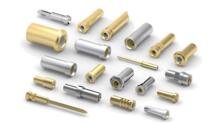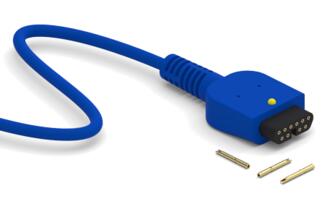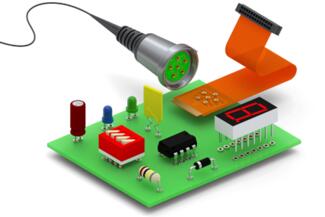Introduction to Pin Receptacles
The Backbone of Your Interconnect System
The basic component used for making electrical connections in a wide array of electronic equipment is the pin receptacle. Sometimes referred to as PCB sockets, micro-plugs or connector jacks, machined pin receptacles are known for their reliability and versatility. Used discretely or in connector arrays, receptacles make devices and modules pluggable for repair and replacement.
Most importantly, critical applications call for machined pin receptacles because a machined receptacle – fitted with a stamped, multi-finger contact that provides an interface with redundant points of contact and a gas-tight connection – delivers vastly superior performance. These contacts maintain their normal and characteristic forces even after extended exposure to shock, vibration and environmental changes. They will function reliably to a minimum of 1,000 insertion/extraction cycles and usually many more depending upon mating pin size, shape and finish. All while exhibiting no electrical discontinuity greater than 1 micro second when subjected to 10-2000 HZ, 15G vibration, or 50G of shock.
Pin Receptacles Processes
Many connector manufacturers, especially those manufacturing medical cables and interconnects, rely on the precision of machined receptacles for use in their assembly processes, such as insert molding, press-fit or ultrasonic welding. These processes demand precision-machined contacts to ensure that the diameters, and sometimes lengths, are controlled to very tight tolerances. Otherwise, these manufacturers may find it difficult to achieve the proper fit between the pin and the housing, which can lead to flashing and other assembly issues. With precision machining, critical tolerances can be held to ±.0005” or better, ensuring a proper fit every time.
Pin Receptacle Options
Machined pin receptacles are fitted with an internal beryllium copper contact which allows them to have a wide mating lead acceptance range. Traditional stamped receptacle and socket products have a fairly tight range of .004” (0,102mm). Machined pin receptacles can have a much greater range, generally .010" (0.254mm), and, in some cases, up to .020” (0,508mm). This can be extremely valuable when the mating lead diameter varies greatly due to manufacturing tolerances or component changes. The versatility and flexibility of machined receptacles is further evidenced by the numerous ways they can be used to accomplish various other objectives. For instance, in making board-to-board connections there are multiple receptacle design styles suitable for robust/power applications on .100” (2,54mm) pitch or greater, as well as for fine pitch down to .8 mm, for low-level, high-speed signal transmission. In addition, SMT and HSMT options offer added design flexibility, allowing I/O and component connectivity to be fully integrated with SMT circuit board production.
Pin Receptacles Applications
Pin receptacles can be utilized as discrete connectors for the plugging and unplugging of components on PC boards. They can be handled and loaded manually in preparation for soldering or, with a different style shell, for press-fitting. When the requirement is for volume placement of receptacles, socket carriers or tape and reel packaging are tremendous labor-saving solutions.
For more detailed design considerations continue on to review more specifics about the Mill-Max contact clip or start a search below.



